Handheld clothes steamer purchasing advice: how to choose the right product
- The most important facts in brief
- Steam straighteners – also called steamers – are household appliances that, like irons, use steam to straighten clothes and keep them fresh.
- Handy models are perfect for travelling.
- The steam treatment without direct contact with the heating surface protects fabrics and keeps their quality longer.
- Steam straighteners are usually used vertically and work on garments hung on a hanger as well as curtains.
- Important factors in choosing the right steamer are heating time, water tank capacity and length of the power cable.
What is a steam straightener?
Like ironing, only more convenient: Steam straighteners are small, handy household appliances that straighten fabrics and clothes. The practical format makes them ideal for travelling, for example on longer trips or when staying overnight in a hotel. The tank for the water that generates the steam is also smaller and in many cases holds no more than a quarter of a litre of liquid. This means you can straighten fewer clothes at once with one filling. However, for those who would only occasionally iron a handful of garments, the steam straightener is a clever alternative to the conventional iron.
Advantages over irons
Steamers are usually designed for vertical use, so you don’t need an ironing board. This is especially advantageous in small flats or confined spaces. Due to the low weight of usually less than one kilogram, it is possible to guide the devices effortlessly with one hand. This way, you not only steam clothes hanging on a hanger, but you can also work on curtains and drapes without taking them down.
Some devices can also be guided horizontally. In this way, you can steam furniture without any problems; you can smooth the upholstery of sofas and armchairs as well as mattresses with the device and kill bacteria at the same time. These usually cannot withstand the high temperatures of the water vapour. However, check the manufacturer’s instructions beforehand to make sure that the model is really suitable for horizontal use. Otherwise, hot water may leak out, posing the risk of scalding.
Professional work
Steam straighteners are also used in a different form in professional dry cleaners to straighten clothes and preserve high-quality fabrics. Shirts and blouses, for example, are pulled over a torso with holes from which steam flows. Steaming inflates the garment, smoothing out wrinkles.
How the steamer copes with different fabrics
When using a steamer, the hot steam is gentler on the fabric than with a conventional iron. Textile fibres are not pressed by direct contact with a hot heating surface and the weight of the iron; rather, the steam loosens the fibres. This gentler treatment means that the clothes retain their quality for longer. Therefore, the steam iron is also suitable for delicate fabrics such as silk or satin. These would be damaged by the high temperature or contact with the heating surface when ironing. In this context, make sure that the appliance does not drip, as the resulting water stains could remain visible.
However, a steamer does not directly touch the clothes to be processed. You always keep the appliance at a distance and thus also the holes from which the steam flows. An attachment for the head of the steam straightener can help with this. In this way, you can also process garments with prints or sequins.
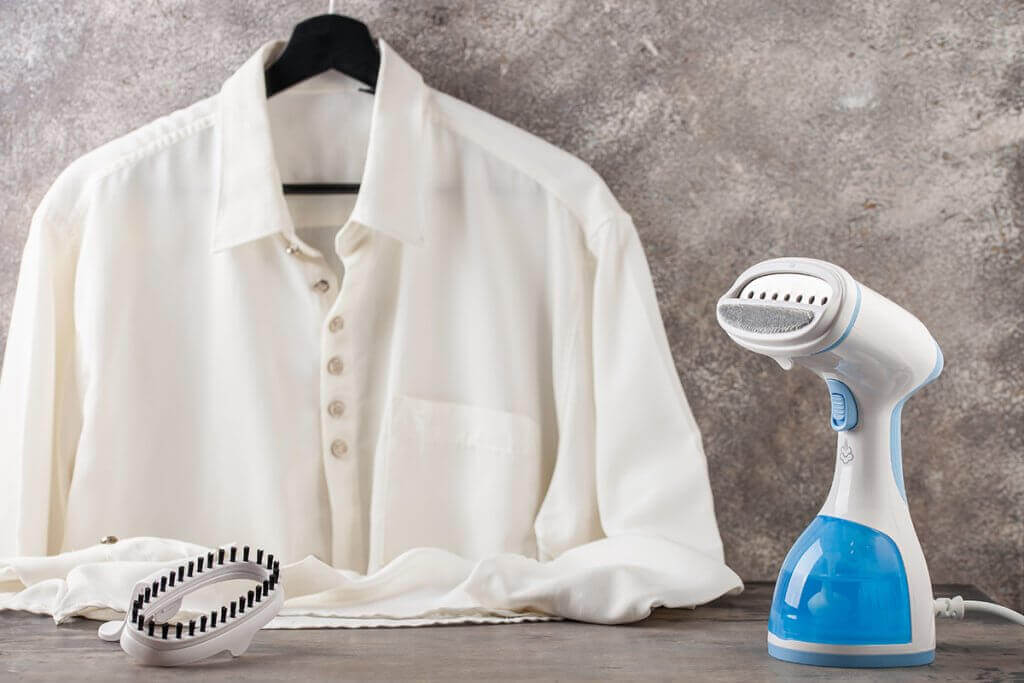
Steam straighteners, on the other hand, sometimes have problems with extremely strong creases, although some models can be set to work at different levels of strength. Firm textiles such as denim or linen can also present difficulties for the appliance and should be processed with the iron for the best result. As a general rule, for thicker or firmer fabrics, the steam straightener must be able to emit a correspondingly stronger steam jet. However, the manufacturer will usually state whether certain textiles are not suitable for processing with a model. If you need to iron frequently or in large quantities, the iron is the better choice. This cannot be replaced one-to-one by the steamer, which should rather be regarded as a supplementary household utensil.
A shirt is quickly steamed
No setting up the ironing board, no preheating for minutes – with a steam straightener you can quickly process two or three garments in between. The low weight and effortless handling may motivate you to do more laundry than conventional ironing. Hanging on the hanger, shirts and skirts are velvetted in no time. You can also use steam to freshen up worn clothes that are not yet dirty and need to go into the washing machine.
Not only for smoothing
The hot steam not only makes the wrinkles in shirts and trousers disappear and the clothes become smooth again. The heat also kills most of the bacteria present and can remove unpleasant odours, such as from sweat or cigarette smoke.
What should I look out for in a steam straightener?
In terms of principle, the individual models from the manufacturers hardly differ. Pay attention to performance-related data to find out which steamer best suits your needs. The energy output of common products ranges from just under 1,000 to about 1,700 watts. However, this does not directly indicate the strength with which the steam is emitted. Particularly light devices weigh only around 700 grams. Make sure, however, that the filled tank is added to this value. Since the weight of the tank is also manageable and the steamer’s operating time is correspondingly limited, working with this appliance should not be too physically demanding.
Heating time

You usually do not have to wait long until the appliance is hot and thus ready for use. Most models have a heating time of half a minute to one minute. This time is much shorter than with an iron. Steaming is therefore not only possible spontaneously, but also when you don’t have much time.
Filling quantity
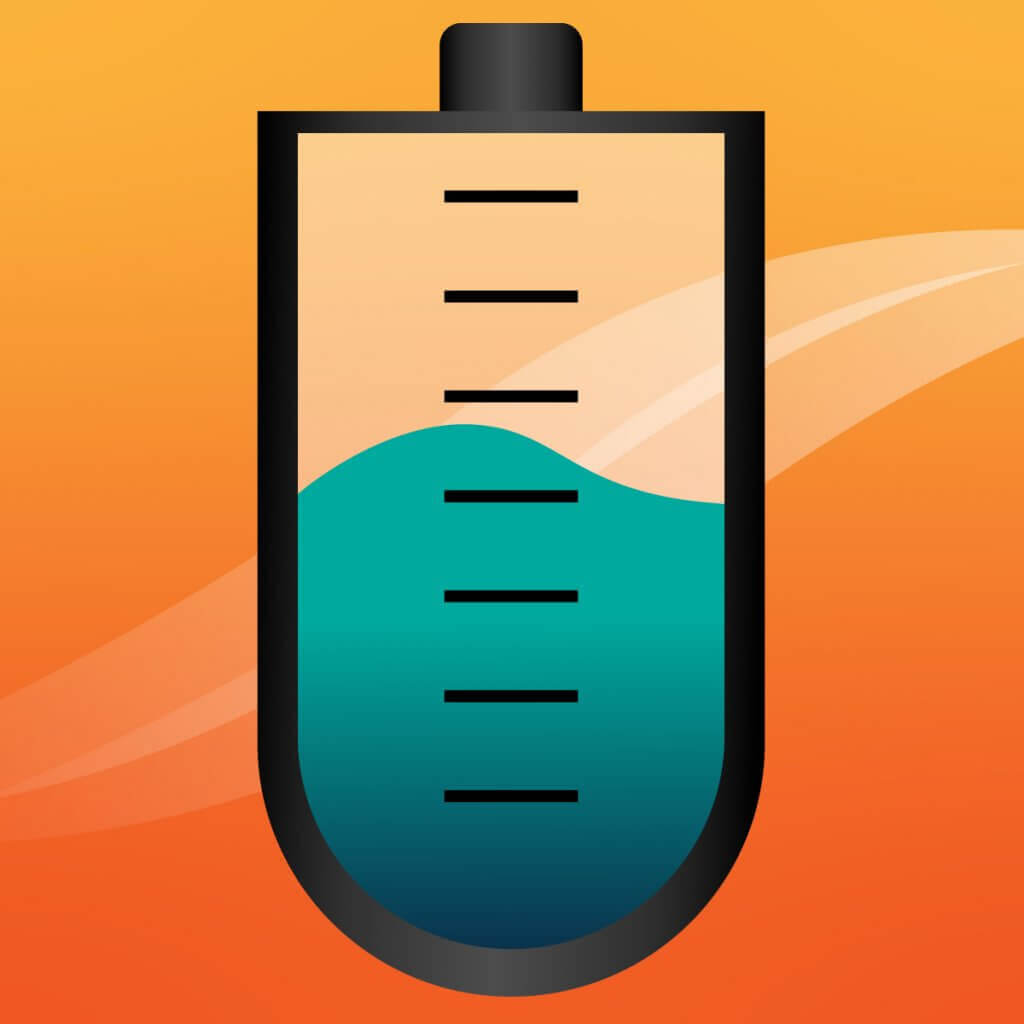
The water tank capacity of steam irons is much smaller than that of irons. In this category, tanks that hold more than a quarter of a litre are already considered large. Some do not even fit 100 millilitres. This is enough for two or three garments, but if you generally iron more, you will have to refill the tank in between or go for a correspondingly larger model.
Steam output

The strength of the steam burst is indicated in grams per minute. The usual value is between 20 and 30 grams of steam per minute. The thicker and firmer the fabric, the stronger the steam jet must be to penetrate it. Some steamers have the advantage that the steam strength can be varied. This allows you to process a wide variety of garments with the appropriate output in each case.
Scope of delivery
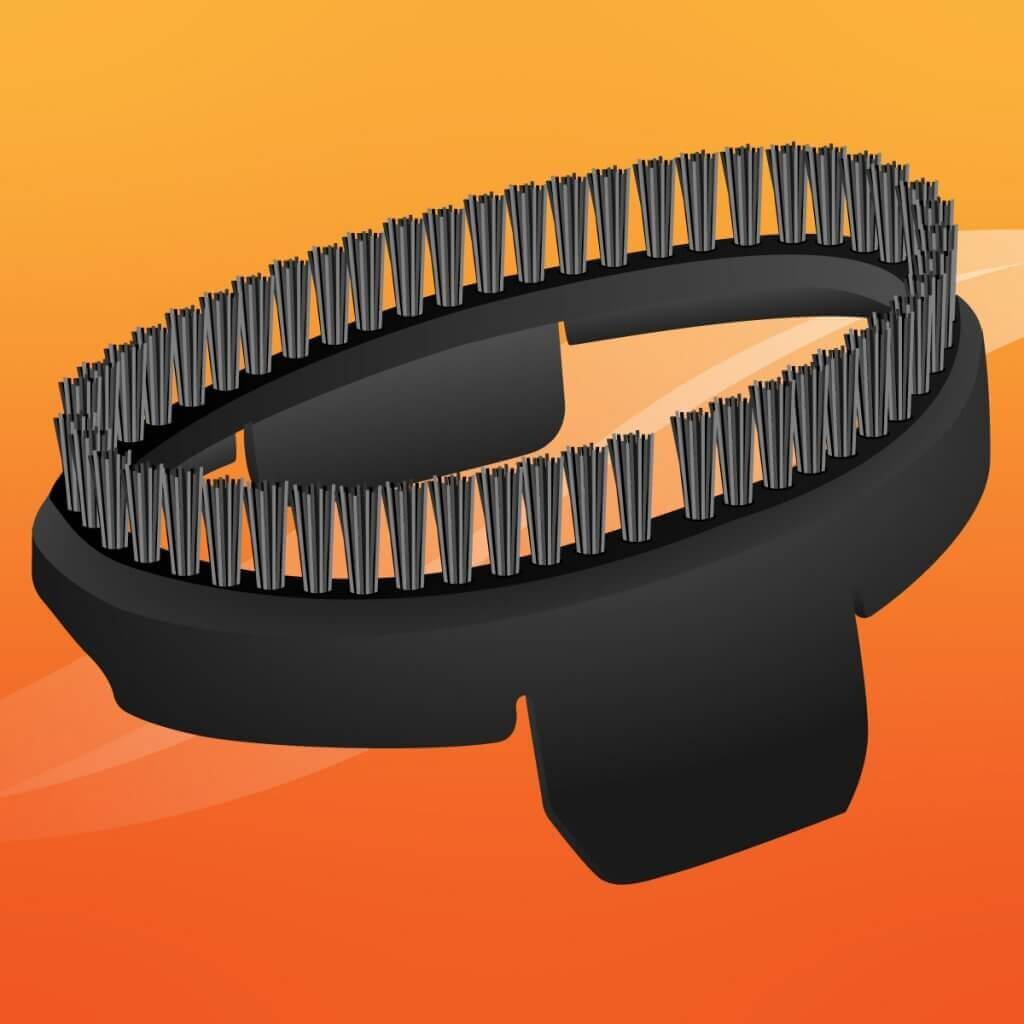
There are special attachments for some steamers, for example a spacer for the heating surface so that it does not accidentally come into contact with delicate fabrics. A brush attachment is included with most models. It removes dust and light dirt during ironing, which is particularly useful for curtains. Brushes with harder short bristles roughen firmer fabrics. Use a heat mitt to get under the fabric in hard-to-iron areas to create a background surface.
Power cable length
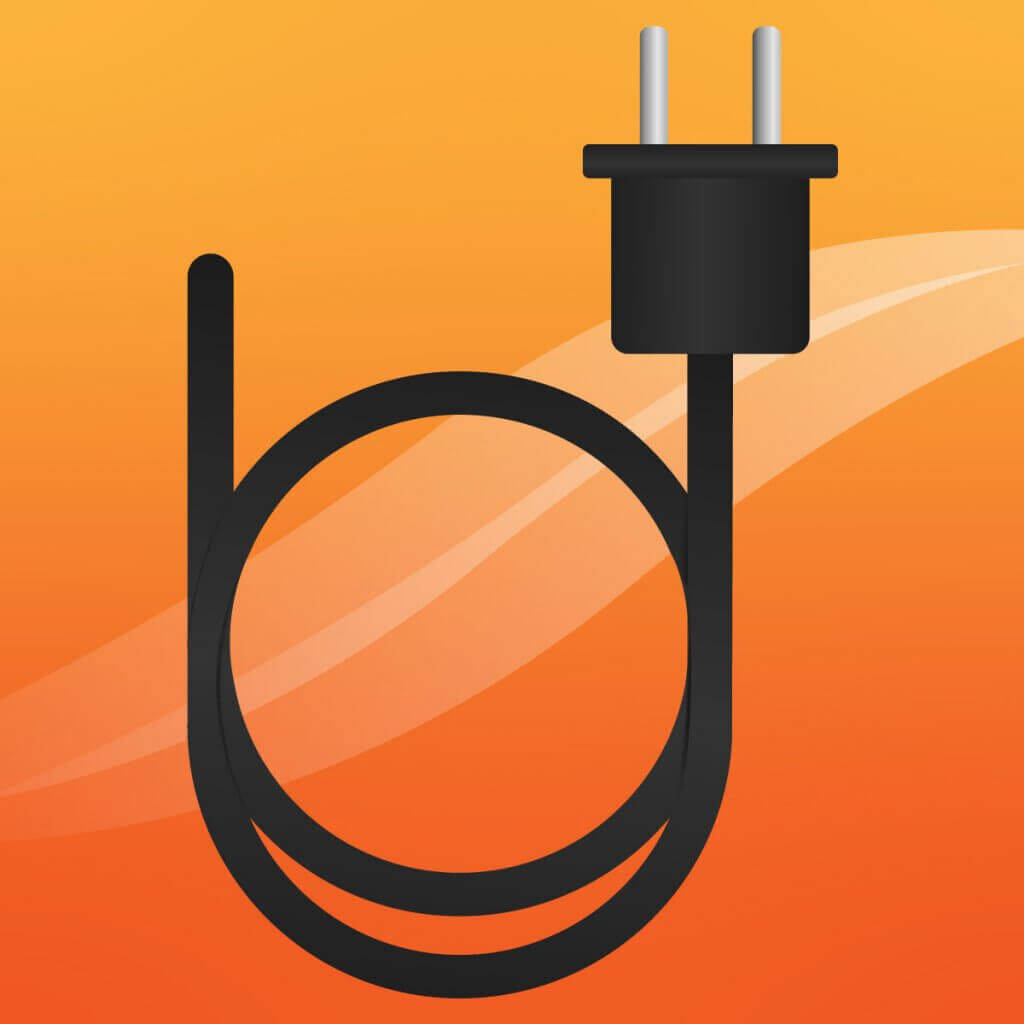
Especially if you are working on hanging curtains, you should make sure that your steam straightener has an appropriately long power cable. The curtains are not necessarily hanging near a power socket. You also need to have the entire length of the fabric in view if you want to steam them all the way to the top. Two metres may already be too short here. If necessary, you must have an extension cable to hand.
Special design: Steam stations
With the same mode of operation as the compact steamers, larger steam straighteners are also available, which are called steam stations. They have a much larger tank, which is also used as a stand. From the base, there is usually an extendable bar to which a clothes hanger is attached. Here you can hang up the clothes directly while steaming. The steam nozzle is connected to the water tank via a long hose.
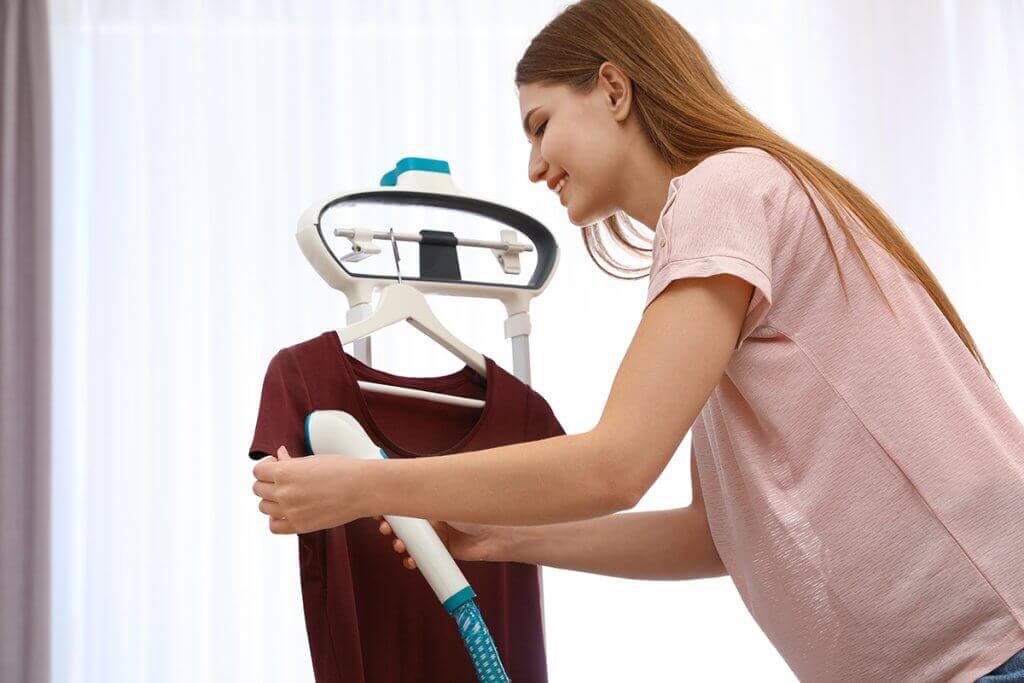
With this version, you are not mobile, but you can use the appliance for much longer and thus process a higher number of garments. A steam station is therefore intended for all those who have to iron frequently and do not want to do without the gentler treatment provided by the steamer. This stationary steamer is also more space-saving than a set-up ironing board.
Using distilled water
Just as with an iron, you should also use low-calcium water, ideally even distilled water, with a steam straightener. You can buy distilled water in drugstores and DIY stores. It is best to find out how high the lime content is in your tap water – for occasional use, it is usually safe to use water with a low lime content or a mixture with distilled water for the tank filling. Some manufacturers also state that their appliances can be used with ordinary tap water.
Vinegar against limescale residues
If limescale remains in the water tank, you can add a splash of vinegar or lemon juice, fill the tank with water and start a pass. Then run the water through again; this should dissolve the residue.
Check water hardness
Local water companies publish the values for tap water in the region at least once a year. This allows you to see how much limescale is in the water. Alternatively, you can get test strips at the pharmacy to determine the so-called water hardness. This is expressed in degrees of German hardness (dH). Water with a hardness of more than 14 dH is called hard water. Household appliances such as kettles, irons and dishwashers can be damaged more quickly by hard water if they are not adequately maintained and regularly descaled.

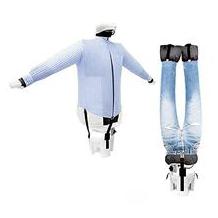
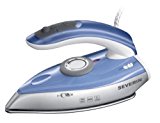
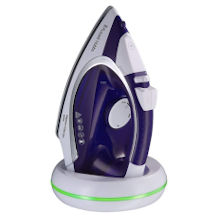
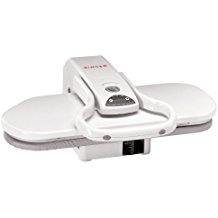
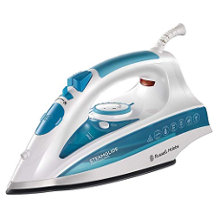
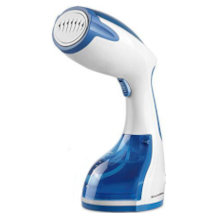
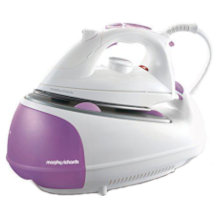
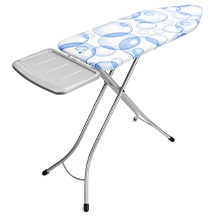
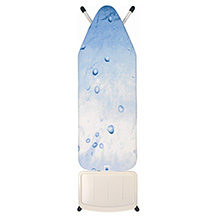



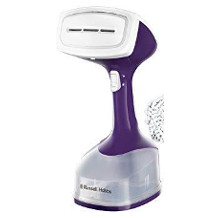

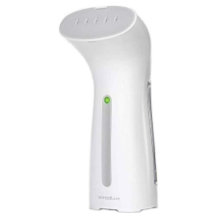
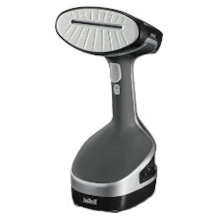


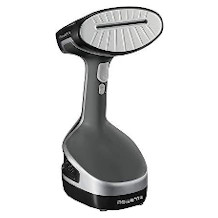
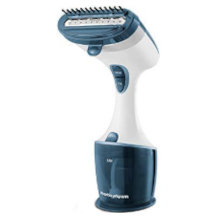
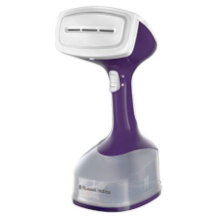



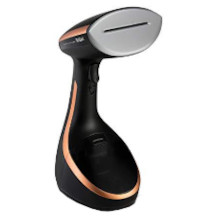

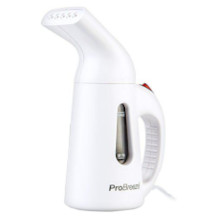


 7,859 reviews
7,859 reviews